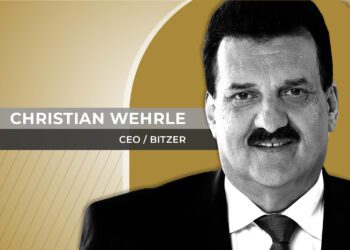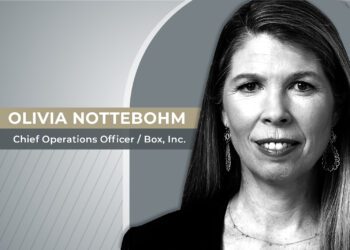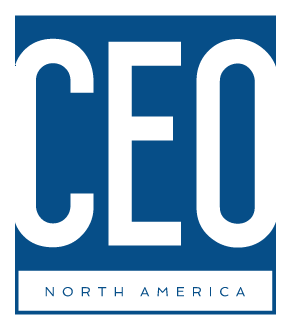Arun Banskota, President and CEO of Algonquin Power and Utilities Corp., believes that a combination of teamwork, technology, and strategic partnerships can help produce a vital transition towards a clean energy future.
ARUN BANSKOTA was appointed President of Algonquin Power and Utilities(AQN) in February 2020 and took on the CEO role the following July. Prior to joining the company, Banskota had30 years of experience in project development, finance, construction, and operations; leading multiple P&L businesses and 3 different start-ups in the clean-tech space from concept to commercialization.
Banskota also spent time at Amazon subsidiary Amazon Web Services where he had global responsibility for growing the data center business. Much of his experience to date is aligned around de-carbonization, which is also a key priority for Algonquin itself—and a challenge Banskota is relishing. “When the opportunity with Algonquin came up, I did a lot of research on the company and what attracted me was the combination of the attractive business platform, the company culture, and all the people I met,” Banskota told CEO Magazine in an exclusive interview. “The business platform was, for me, a really exciting mix of a regulated utility, renewables, and international. As for the culture, from what I could see it was a very entrepreneurial, customer focused, and teamwork oriented company.”
Algonquin Power & Utilities Corp. is a Canadian renewable energy and regulated utility conglomerate with assets in 16 different jurisdictions across North America, Chile and Bermuda. Algonquin actively invests in hydroelectric, wind and solar power facilities, and utility businesses (water, natural gas, electricity), through its two operating subsidiaries: Liberty Power and Liberty Utilities. The company is listed on both the New York and Toronto stock exchanges, and was added to the prestigious TSX 60 Index in June 2020. Algonquin currently has a market capitalization of $9.8 billion and an asset base of $13.2 billion.
“Our diversified asset base and decentralized operations really set us apart,” Banskota stated. “Our business leaders are located in the communities where our customers live and work, and we have a strong culture of benchmarking, best practices, and continuous learning. We’ve published an annual sustainability plan for several years running now and clearly articulate our environmental, social, and governance goals. We’re very metrics oriented and very focused on fulfilling our promises. It’s really exciting to me how aligned we are with where the market, industry, and society are going right now.”
A THREE PILLAR STRATEGY
In December 2020, Algonquin announced a $9.4 billion five-year capital expenditure plan which Banskota believes will translate into between 8-10% annual growth over those coming years. With a view to meeting those expectations, Banskota has identified three strategic pillars to guide the company through its new era and embrace the many changes sweeping through the energy, power, and utility industries: growth, operational excellence, and sustainability.
“We’ve always been a very high growth company in comparison to our peers and I believe we’re on a trajectory to continue that expansion,” he highlighted. “As far as operational excellence goes, we have to remember that we’re a mission critical industry. Our customers depend on use very day for electricity, natural gas, and water, and how we provide that service is critical, so customer focus is at the heart of our operational excellence strategy—basically, safety, security, reliability, and affordability. It’s about having that laser focus on improving our day to day service delivery in every area.”
On sustainability, Banskota sees the 26th UN Climate Change Conference (COP26) to be held in Glasgow, Scotland, over November 1-12 as a significant landmark on the transition to Net Zero Carbon by 2050, and is an enthusiastic supporter of President Joe Biden’s target to have the United States running off an entirely carbon free electricity grid by 2035. Algonquin has among the lowest carbon intensities in its industry and was recently added to the S&P Global Clean Energy Index which tracks companies in global clean energy-related businesses.
“To give you an example of our commitment to sustainability, in 2017 we acquired the Missouri-based Empire District Electric Company, which used to own and operate a 200 MW coal plant,” Banskota explained. “Last year we decommissioned the plant, reducing our carbon emissions by almost a million metric tons per year, and this year constructed and put into service 600 MW of wind farms in its place. That’s great for the environment and the world at large, but it’s also good for our customers because over the long term we’re going to be reducing rates, and it’s good for our shareholders since we are finding all these innovative ways to grow.
“If you look at last year, that was the largest renewables construction program in our 33-year history. Of the 1,600 MW of new renewable energy projects that we had under construction in 2020 and to date in 2021, 1400 MW is already online. We’ve also announced a greenfield development opportunity of over 3400 MW. We are the largest shareholder in Atlantica, which is also focused on owning and operating renewable energy assets, and whose business philosophy is aligned with our own. Given the businesses we’re in and the opportunities we have in front of us, we’re extremely well positioned to contribute to and benefit from the global move towards clean energy and de-carbonization.”
CONTINUOUS LEARNING
Banskota believes strongly in the principle of continuous learning, the idea that a business organization should constantly benchmark and learn from its various business units, correct its mistakes, and always be aware of areas it can improve upon. In such a vital industry, constant improvement is essential to retaining customers with increasingly broader and more complex needs and whose concerns around climate change and other environmental and social issues are also growing.
“Continuous learning is one of our guiding principles and a big part of the culture at Algonquin,” Banskota highlighted. “It’s a very formal process. We are organized into many business units, and have a robust program of benchmarking, best practices, and ranking. Whenever we come across issues, there are lessons learned and questions asked: What are the actions we need to take, what do we need to put in place to ensure this doesn’t happen again? Our decentralized structure enables us to identify problems and make decisions much more quickly.”
EMBRACING TECHNOLOGY
Unsurprisingly, technology has played a key role in this principle. In 2020, Algonquin invested in a new IT platform it calls Customer First which has eliminated many of the manual processes of customer service with a view to improving the consistency and quality of the company’s service. “With tools like data analytics and AI, it’s really about how you leverage that technology in order to get better insights, and ultimately, make better decisions,” Banskota insisted. “We’re really only scratching the surface of how much it can help us.
“For example, something we did last year was to gather all the data coming out of our wind farms and then analyze the data to define proactive actions we could take around turbine downtime and faults, leading to an 18% reduction in production losses,” he elaborated. “That was only possible because of data analytics. What we’re also trying to do is to get the benefits of this technology as close to the customer as possible. We already have a framework so that front line employees have the tools to be able to make data driven decisions and get feedback from customers right on the spot.”
STAYING COMPETITIVE
Banskota was quick to point out that while Algonquin are the developers, owners, and operators of equipment, they depend greatly on key strategic suppliers to provide the technology that is increasingly crucial to a utilities and renewables company. Yet he views these suppliers as partners as opposed to vendors and insisted they have made important contributions to enhancing both Algonquin’s supply chain efficiency and its onsite operations.
“Moving from vendor-customer relationships to deeper strategic partnerships has been and continues to be essential to us staying competitive,” he explained. “Last year we constructed 1600 MW of wind and solar in North America and that involved a truly global supply chain. That was absolutely critical to us completing our projects on time and on budget, especially during the Covid-19 pandemic.”
By Anthony Moran












